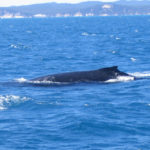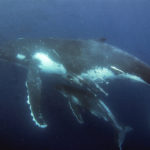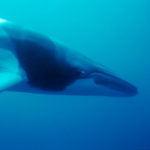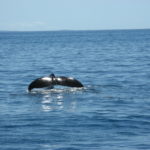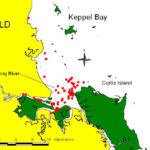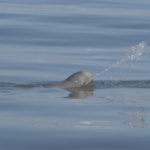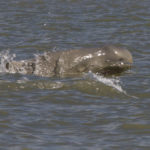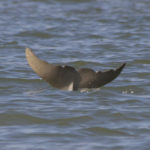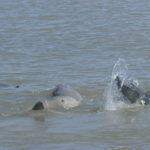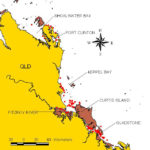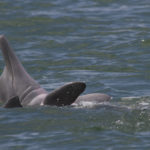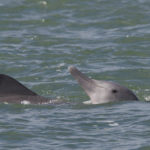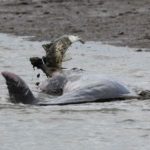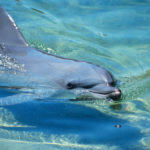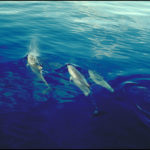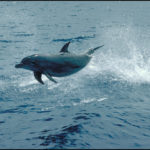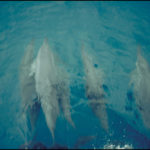- Overview
- Coral Reefs
- Seagrass
- Marine Turtles
- Crocodiles
- Whales and Dolphins
- Dugongs
- Sea Birds
- Environmental Values
Whales and Dolphins

Humpback whales migrate through the Fitzroy Region every winter. They head north in June/July to calve and mate, then return south to Antartica waters in September, stopping regularly in shallow waters to nurture their young.
Three species of inshore dolphin are found in the Fitzroy estuary:
- the Australian snubfin dolphin
- the Australian humpback dolphin, and
- the Indo-Pacific (inshore) bottlenose dolphin.
Dolphins are long-lived species that are slow to grow and breed, making them vulnerable to impacts and slow to recover.
Conservation status of whales and dolphins found in the Fitzroy Basin marine region (Source: EPBC website, NCA website).
| Common name | Conservation status under Federal and State legislation | |
|---|---|---|
| EPBC | NCA | |
| Humpback whale | Vulnerable; migratory | Vulnerable |
| Australian snubfin dolphin | Migratory | Near threatened |
| Australian humpback dolphin | Migratory | Near threatened |
| Indo-Pacific (in-shore) bottlenose dolphin | Migratory | Near threatened |
Whales
Humpback whales migrate through the Fitzroy Region from May to October, on their way from summer feeding grounds in Antarctica to winter breeding grounds on the Great Barrier Reef. Of the other four baleen whales found in the Great Barrier Reef, the dwarf minke whale is the only other whale regularly seen in the Fitzroy Region’s marine area.
Click on the thumbnails below for a larger image.
Australian snubfin dolphin
The Fitzroy River estuary and Keppel Bay provide critical habitat for Australian snubfin dolphins. The Fitzroy population is the southernmost extent of the species, and is one of only three known areas where large groups of the dolphins are found. About 80 snubfin dolphins live in the waters at the mouth of the Fitzroy estuary, preferring to stay close to land and the river mouth. The species is of conservation concern and appears to be declining in numbers.
Click on the thumbnails below for a larger image.
Australian humpback dolphin
Australian humpback dolphins are another inshore dolphin found in tropical and subtropical waters in northern Australia and Asia. In southern and central Queensland, humpback dolphins are found in small, isolated populations in enclosed coastal and estuarine waters.
Both snubfin and humpback dolphins in the Fitzroy Region have accumulated significant industrial contaminants in tissue samples.
Click on the thumbnails below for a larger image.
Indo-Pacific (inshore) bottlenose dolphin.
Indo-Pacific bottlenose dolphins have a wider geographic distribution, including most of the Indian and western Pacific oceans. In the Great Barrier Reef, bottlenose dolphins are found in large numbers, mainly offshore along the Reef. Further south they tend to be found along the coast.
Click on the thumbnails below for a larger image.


